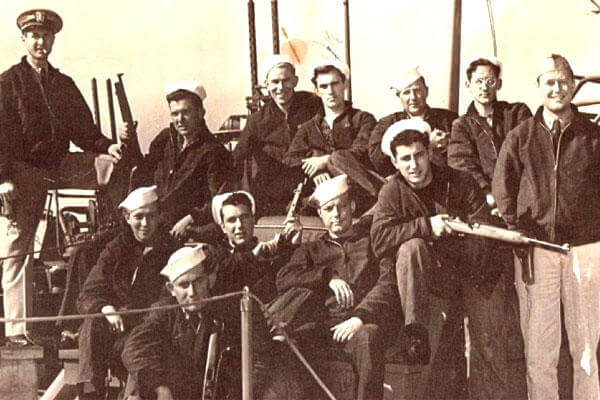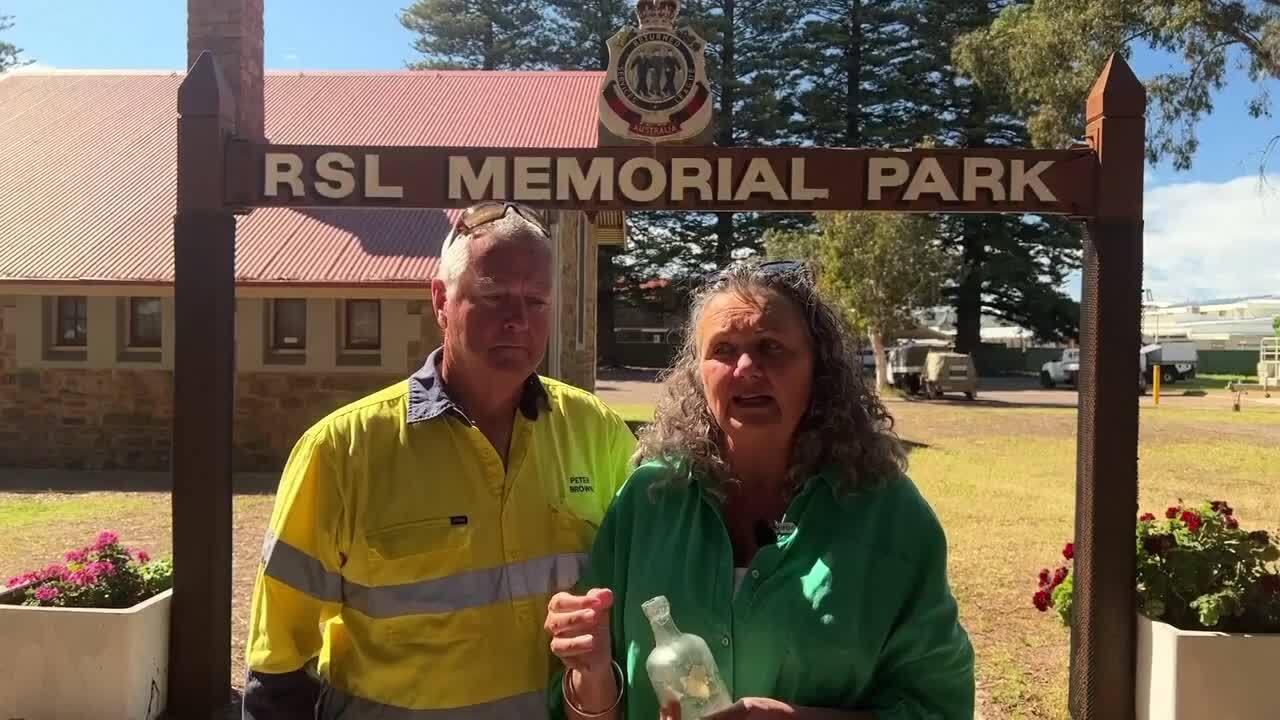It was a run-in with the enemy that was too close for comfort, and more than 70 years later, the details remain vivid in the mind of a Navy veteran who served aboard a legendary ship.
US Navy Torpedoman 1st Class James Nerison was part of the PT-305 crew patrolling off the coast of Corsica in 1944 when a pair of German destroyers locked onto them. The Higgins Industries Patrol-Torpedo boats were known for their speed and maneuverability, but they were up against superior Nazi firepower.
"We couldn't shake them off for about 45 minutes and we were drawing a lot of fire," Nerison, now 91, recalled. "I secured the torpedo rack that we launched the torpedoes with and ran up to the skipper and said, 'Do you want me to throw over a smoke pot?'"
The young sailor was referring to a 5-gallon can with chemicals that emitted smoke as a distraction. He was given the approval to toss the container over the side, and the German warships quickly started firing at it as PT-305 slipped off into the darkness.
"We got off to one side and they weren't able to find us that night," Nerison said.
The California native's experience is just one of many among the 44 officers and enlisted men who called PT-305 home during World War II. Now Nerison, along with Joseph Brannan, a former 1st class gunner's mate who also served on PT-305, hope to ride the boat once again.
The National World War II Museum, located in New Orleans, on Tuesday launched a Kickstarter campaign to raise $100,000 to complete its PT-305 restoration project, and hopes to have the boat sailing Louisiana's Lake Pontchartrain by early next year.
"It helps us cover all of the costs that are needed to transport the boat to the water and cover all the testing and certifications so the boat is ready to operate," Tom Czekanski, the museum's director of exhibitions and collections, told FoxNews.com.
The battle-hardened boat, which operated in the Mediterranean along the coasts of southern France and Northern Italy, conducted more than 77 offensive patrols and operations, fought in 11 separate actions and sank three German ships during its 14-month deployment, according to the museum.
After the war, PT-305 took on a civilian role as a tour boat in New York Harbor, a fishing charter and an oyster boat, while falling into disrepair before the museum scooped it up in 2007.
A volunteer crew, which includes people from all walks of life -- from students to architects -- has already worked more than 100,000 hours on the project at the museum's restoration pavilion.
Parts for restoring the boat -- such as engines, deck fittings and exhaust ports -- have come from other PT boats and nearly $3 million from in-kind donations.
Czekanski said ever since the museum opened in 2000, curators have coveted a working Higgins PT boat. All that's left to be done, he added, is the installation of mechanical systems, such as plumbing lines. The weapons on the ship, however, will not be operational.
Once the boat is available for the paying public to ride on, the museum hopes it will generate enough revenue to cover its upkeep and ensure that future generations can learn about the heroics of the veterans that served aboard PT-305.
"The restoration of PT-305, like all museum restoration projects, is aimed at making history accessible to today's audiences in as detailed and authentic a way possible," said museum executive vice president and COO Stephen Watson.
Nerison can't wait to see his old boat sail again.
"I was taken aback by the fact that my boat was finally going to be restored," Nerison told FoxNews.com. "I'm just lucky to have been on the boat that is going to be on show for everybody to see."
PT-305, built by New Orleans-based Higgins Industries - a company that specialized in manufacturing small boats -- was completed on December 8, 1943. It was then assigned to the Motor Torpedo Boat Squadron 22.
The boats, designed for stealthy torpedo attacks on enemy supply and troop barges, relied on speed and maneuverability to get away from danger.
"They are fast and nimble and a great piece of American ingenuity used in the war," Czekanski told FoxNews.com.
PT-305 also conducted reconnaissance missions, landed troops on occupied coasts and carried generals, making most of its movements at night underneath the cover of darkness.
"German planes would see you in the daytime and come out of nowhere and strafe you and bomb you," Brannan, 93, told FoxNews.com.
"There were no railings on the outside of the boat and we never lost anyone," he added.
Brannan, an Arkansas native who said he was "very excited" about the project, started serving on PT-305 in December of 1944.
In June 1945, Brannan and Nerison's squadron returned to New York from the Mediterranean and the war ended before PT-305 could be overhauled for deployment to the Pacific.
"We didn't need the eyes anymore, because we had her home at last"
- Tom Czekanski, the National World War II Museum's director of exhibitions and collections
But the boat didn't look the same as the first time it crossed the Atlantic.
Nerison, who wanted a fix for the stuffiness of the crew's quarters, said when the crew was based in Saint Tropez in Southern France after fighting began to subside, he managed to find some brass portholes at a boatyard.
He asked the skipper if he could install one on each side of the boat -- and the problem was solved.
"That was a modification that I don't think any other PT boat in the Navy had at the time," Nerison told FoxNews.com.
Following the war, the Navy burned 118 boats off the coasts of the Philippines to downsize its fleet.
Only a handful of PT boats survived - PT-305 being one of them - and it was sold as military surplus for $10 along with the rest of the squadron, the museum said.
During its civilian life, PT-305 underwent additional modifications - such as the removal of 13 feet from the stern -- to reduce operating costs and to comply with Coast Guard regulations.
Czekanski led the trip to Galveston Island to retrieve PT-305 from the Defenders of America Naval Museum in Galveston, Texas, in April 2007.
The restoration team had painted eyes on the front of the boat, which, according to nautical legend, would help it find its way home.
"We didn't need the eyes anymore," Czekanski said, "because we had her home at last.



























